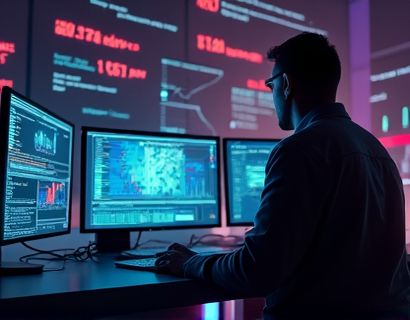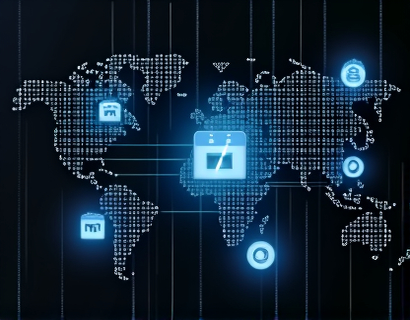Blockchain-Driven Asset Tokenization: Unlocking Liquid Value and Market Accessibility for Real-World Assets
Blockchain technology is transforming the landscape of asset management by introducing a novel method for tokenizing real-world assets. This innovative approach not only enhances liquidity but also broadens market accessibility, offering a secure and transparent environment for asset holders and investors. The integration of physical assets into the digital ecosystem through blockchain ensures that these assets can be easily traded, managed, and valued in a decentralized manner.
The concept of asset tokenization involves converting tangible assets such as real estate, art, infrastructure, and even intangible assets like intellectual property into digital tokens on a blockchain. These tokens represent fractional ownership or rights to the underlying asset, making it possible for multiple parties to invest in and trade these assets more efficiently. This transformation is pivotal in addressing the traditional challenges associated with real-world assets, including illiquidity, high transaction costs, and limited market reach.
Enhancing Liquidity through Tokenization
One of the most significant benefits of blockchain-driven asset tokenization is the enhancement of liquidity. Traditional real-world assets are often illiquid, meaning they cannot be quickly bought or sold without significantly affecting their price. Tokenization changes this dynamic by breaking down these assets into smaller, tradable units. For instance, a piece of real estate worth millions can be divided into thousands of tokens, each representing a fraction of the property. This division allows for easier and faster transactions, as investors can buy, sell, or trade these tokens on various platforms without the need for cumbersome due diligence processes typical in traditional real estate transactions.
The increased liquidity also attracts a broader range of investors, including those with smaller capital bases. Traditionally, investing in real estate required substantial capital, making it inaccessible to many. Tokenization lowers the entry barrier, enabling more individuals to participate in the market. This democratization of investment opportunities fosters a more inclusive financial ecosystem, where a wider array of participants can benefit from the growth and appreciation of real-world assets.
Improving Market Accessibility
Beyond liquidity, tokenization significantly improves market accessibility for real-world assets. The global nature of blockchain ensures that assets can be accessed and traded by anyone with an internet connection, regardless of geographical location. This global reach expands the potential investor base and increases the efficiency of the market. For example, a company looking to raise capital for a new project can tokenize its assets and attract investors from around the world, bypassing the limitations of local markets and regulatory constraints.
Moreover, the transparency provided by blockchain technology enhances trust and confidence in the market. Every transaction involving tokenized assets is recorded on the blockchain, creating an immutable and verifiable history. This transparency reduces the risk of fraud and errors, as all parties can independently verify the authenticity and ownership of the assets. The reduced need for intermediaries, such as banks and legal firms, further streamlines the process, lowering transaction costs and speeding up transactions.
Secure and Transparent Asset Management
The security and transparency offered by blockchain are fundamental to the success of asset tokenization. Blockchain's decentralized and distributed ledger technology ensures that once a transaction is recorded, it cannot be altered or deleted. This immutability provides a high level of security against tampering and fraud. Additionally, smart contracts, self-executing contracts with the terms directly written into code, can automate and enforce the rules of asset transactions. These contracts reduce the need for manual intervention and intermediaries, further enhancing efficiency and reducing the risk of human error.
Transparency is another key feature of blockchain. All transactions and asset histories are visible to all participants in the network, promoting accountability and trust. This level of transparency is particularly valuable in industries where trust and verification are critical, such as real estate, art, and collectibles. Investors can confidently make informed decisions based on verifiable data, reducing the uncertainty and risk associated with traditional asset investments.
Use Cases and Industry Impact
The applications of blockchain-driven asset tokenization extend across various industries, each benefiting in unique ways. In the real estate sector, tokenization can facilitate fractional ownership, making properties more accessible to a broader audience. For example, a commercial building can be tokenized, allowing multiple investors to own shares of the property. This model not only increases liquidity but also provides a new revenue stream for property owners through token sales and rental income.
In the art and collectibles market, tokenization can authenticate and verify the ownership of unique items, reducing the risk of forgeries and disputes. Artists and collectors can benefit from easier transactions and a wider market reach. Similarly, in the infrastructure sector, tokenization can attract private investment into public projects, combining public and private capital to fund and manage large-scale projects more efficiently.
The financial industry stands to gain significantly from asset tokenization as well. Securitization, the process of pooling various assets into tradable securities, can be streamlined through blockchain. This process traditionally involves complex and time-consuming procedures, but tokenization simplifies it, allowing for faster and more efficient capital raising. Additionally, the reduced need for intermediaries can lower costs and increase returns for investors.
Challenges and Considerations
Despite the numerous benefits, the tokenization of real-world assets is not without challenges. Regulatory frameworks are still evolving, and the lack of clear guidelines can create uncertainty for participants. Compliance with existing laws and the development of new regulations tailored to blockchain and tokenization are essential to ensure a stable and trustworthy market. Additionally, technical challenges such as scalability and interoperability between different blockchain platforms need to be addressed to facilitate widespread adoption.
Another consideration is the potential for market volatility. As with any new asset class, the tokenized assets may experience price fluctuations, which can impact investor confidence. Education and awareness about the risks and rewards of tokenization are crucial to foster a well-informed investor base. Furthermore, the integration of traditional and blockchain-based systems requires careful planning to ensure seamless operations and minimize disruptions.
Future Prospects
The future of blockchain-driven asset tokenization looks promising, with ongoing advancements in technology and increasing regulatory clarity. As more industries recognize the potential of tokenization, we can expect to see a broader range of assets being tokenized, from real estate and art to commodities and even digital content. The development of cross-chain solutions will enable assets to be traded across different blockchain platforms, enhancing interoperability and market efficiency.
In conclusion, blockchain-driven asset tokenization is revolutionizing the way real-world assets are managed, traded, and valued. By enhancing liquidity, improving market accessibility, and providing a secure and transparent environment, tokenization opens up new opportunities for investors and asset holders. As the technology matures and regulatory frameworks evolve, the impact of tokenization on various industries will continue to grow, shaping a more inclusive and efficient financial ecosystem.










































